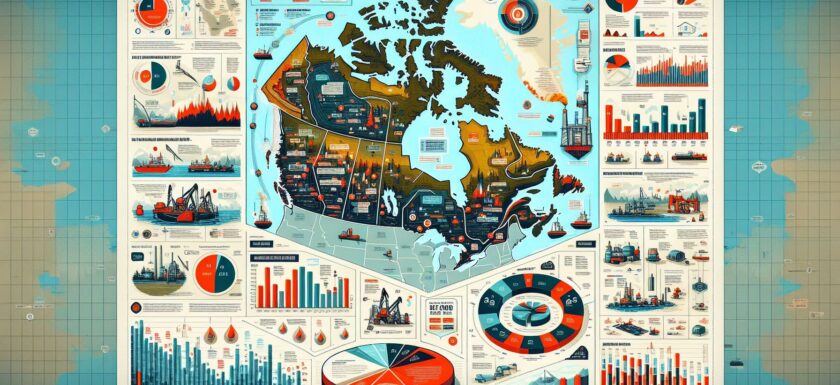Canada’s Oil & Gas Industry: An Unconventional Path to Prosperity
With vast reserves of oil and natural gas, Canada’s oil and gas industry plays a crucial role in the country’s economy. From exploration and production to refinement and distribution, this sector contributes significantly to employment, government revenues, and energy security. In this blog post, we will explore the intricacies of Canada’s oil and gas industry, focusing on its unconventional methods, the challenges it faces, and the potential for future growth.
An Unconventional Approach
The oil and gas industry in Canada is known for its unconventional methods of extraction. While traditional drilling techniques are used, the country has also embraced innovative methods like hydraulic fracturing, commonly known as fracking. This process involves injecting high-pressure fluids into rock formations to release trapped oil and gas. Although controversial due to environmental concerns, fracking has been instrumental in unlocking previously inaccessible reserves and propelling the industry’s growth.
Another unconventional method widely employed in Canada is tar sands extraction. Often referred to as oil sands, this resource is a mixture of sand, water, clay, and bitumen – a dense and heavy form of petroleum. Extracting oil from tar sands is a complex process that requires enormous amounts of water and energy. However, it has provided Canada with immense oil reserves, making it the world’s fourth-largest oil producer.
Challenges and Controversies
Despite its importance to the Canadian economy, the oil and gas industry faces several challenges and controversies. One significant obstacle is the transportation of oil and gas across the vast Canadian landscape. Limited pipeline infrastructure and environmental concerns have hindered the efficient movement of resources to refineries and export terminals. Developing new pipelines, such as the contentious Keystone XL pipeline, requires navigating complex regulatory processes, Indigenous land rights, and addressing environmental sustainability.
Environmental sustainability is a major concern surrounding the industry. The extraction of oil and gas from unconventional sources has been criticized for its significant carbon footprint and impact on local ecosystems. In recent years, there has been a growing push for transitioning towards cleaner energy sources to reduce greenhouse gas emissions and combat climate change. The Canadian government has taken steps to regulate emissions and invest in renewable energy, but striking a balance between economic growth and environmental protection remains a challenge.
Indigenous rights and reconciliation are also integral to the oil and gas industry’s future. Indigenous communities, who often reside in regions rich in natural resources, have historically faced issues related to land rights, consultation, and compensation. Collaborative efforts between the industry and Indigenous communities are essential to ensure equitable participation, mutual respect, and socioeconomic development.
A Path to a Sustainable Future
The Canadian oil and gas industry holds considerable potential for future growth and innovation. As global demand for energy continues to rise, Canada’s abundant resources can play a vital role in meeting this demand. However, to embrace a sustainable future, the industry must adapt and evolve.
Investment in research and development is crucial to reduce the environmental impact of extraction and processing techniques. Innovations like carbon capture and storage, renewable energy integration, and efficiency improvements can help mitigate the industry’s contribution to climate change. Additionally, a diversified energy portfolio that includes renewable sources alongside conventional resources can ensure a reliable and cleaner energy supply.
Collaboration between stakeholders, including industry, government, Indigenous communities, and environmental organizations, is paramount to navigate the complex challenges ahead. A shared vision of sustainable development, guided by robust regulations and inclusive decision-making processes, can help foster a viable and prosperous path forward for the Canadian oil and gas industry.
In Conclusion
Canada’s oil and gas industry, with its unconventional methods of extraction, has played a significant role in the country’s economic growth. However, it faces challenges related to transportation, environmental sustainability, and Indigenous rights. By investing in innovation, embracing renewable energy, and fostering collaboration, this industry can pave the way for a prosperous and sustainable future. Striking a balance between economic development and environmental stewardship will be crucial as Canada charts its path to energy prosperity.





